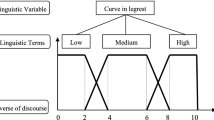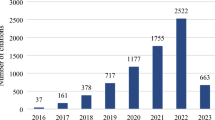Abstract
Adaptive design of experiments approaches are intended to overcome the limitations of a priori experimental design by adapting to the results of prior runs so that subsequent runs yield more significant information. Such approaches are valuable in engineering applications with metamodels, where efficiently collecting a dataset to define an unknown function is important. While a variety of approaches have been proposed, most techniques are limited to sampling for only one phenomenon at a time. We propose a multicriteria optimization approach that effectively simultaneously samples for multiple phenomena. In addition to determining the next sequential sampling point, such an algorithm also can be formulated to support conclusions about the adequacy of the experiment through the use of convergence criteria. A multicriteria adaptive sequential sampling algorithm, along with convergence metrics, is defined and demonstrated on five trial problems of engineering interest. The results of these five problems demonstrate that a multicriteria sequential sampling approach is a useful engineering tool for modeling engineering design spaces using NURBs-based metamodels.















Similar content being viewed by others
References
Hamada M, Wu C (2000) Experiments: planning, analysis, and parameter design optimization. Wiley, New York
Montgomery D (1997) Design and analysis of experiments, 4th edn. Wiley, New York
Myers R, Montgomery D (2002) Response surface methodology: process and product optimization using designed experiments, 2nd edn. Wiley, New York
Turner C (2005) HyPerModels: hyperdimensional performance models for engineering design. Ph.D. Dissertation, Department of Mechanical Engineering, The University of Texas at Austin, Austin
Rogers D, Adams J (1990) Mathematical elements of computer graphics, 2nd edn. McGraw-Hill, New York
Piegl L, Tiller W (1997) The NURBS book, 2nd edn. Springer, Berlin Heidelberg New York
Cohen E, Riesenfeld R, Elber G (2001) Geometric modeling with splines: an introduction. A.K. Peters, Natick
Turner C, Campbell M, Crawford R (2004) Metamodel defined embedded multidimensional sequential sampling criteria. In: Proceedings 2004 ASME IDETC/CIE, Salt Lake City, Utah, CIE-57722
Turner C, Crawford R (2005) Adapting non-uniform rational B-spline fitting techniques to metamodeling. In: Proceedings 2005 ASME IDETC/CIE, Long Beach, CIE-85544
Gopi M, Manohar S (1997) A unified architecture for the computation of B-spline curves and surfaces. IEEE Trans Parall Dist Sys 8:1275–87
Farhang-Mehr A, Azarm S (2005) Bayesian meta-modelling of engineering design simulations: a sequential approach with adaptation to irregularities in the response behavior. Int J Numer Meth Eng 62:2104–26
Osio I, Amon C (1996) An engineering design methodology with multistage Bayesian Surrogates and optimal sampling. Res Eng Design 8:4, 189–206
Martin J, Simpson T (2002) Use of adaptive metamodeling for design optimization. In: 9th AIAA/ISSMO symposium on Multidis. Anal. and Opt., Atlanta, Georgia, AIAA-2002–5631
Wang G, Simpson T (2004) Fuzzy clustering based hierarchical metamodeling for design space reduction and optimization. Eng Optim 35:313–35
Sasena M, Parkinson M, Goovaerts P, Papalambros P (2002) Adaptive experimental design applied to an ergonomics testing procedure. In: Proceedings 2002 ASME IDETC/CIE, Montreal, DAC-34091
Sasena M (2002) Flexibility and efficiency enhancements for constrained global design optimization with kriging approximations. Ph.D. Dissertation, University of Michigan, Ann Arbor, MI
Pérez VM, Renaud J, Watson L (2002) Adaptive experimental design for construction of response surface approximations. AIAA J 40:2495–2503
Gutmann H (2001) A radial basis function method for global optimization. J Global Optim 19:201–27
Jin R, Chen W, Sudjianto A (2002) On sequential sampling for global metamodeling in engineering design. In: Proceedings 2002 ASME IDETC/CIE, Montreal, DAC-34092
Kushner H (1964) A new method of locating the maximum of an arbitrary multi-peak curve in the presence of noise. J Basic Eng 86:97–106
Locatelli M (1997) Bayesian algorithms for one-dimensional global optimization. J Global Optim 10:57–76
Mockus J (1989) Bayesian approach to global optimization. Kluwer, New York
Schonlau M (1997) Computer experiments and global optimization. Ph.D. Dissertation, University of Waterloo, Waterloo
Cox D, John S (1997) SDO: a statistical method for global optimization. In: Multidisciplinary Design Optimization: State of the Art, SIAM, Philadelphia, pp 315–29
Farhang-Mehr A, Azarm S (2002) A sequential information-theoretic approach to design of computer experiments. In: 9th AIAA/ISSMO symposium on Multidis. Anal. and Opt., Atlanta, AIAA, AIAA-2002–5571
Watson A, Barnes R (1995) Infill sampling criteria to locate extremes. Math Geol 27:589–608
Kirkpatrick S, Gelatt CD, Vecchi MP (1983) Optimization by simulated annealing. Science 220:671–679
Cerny V (1985) A thermodynamical approach to the traveling salesman problem: an efficient simulation algorithm. J Optim Theory Appl 45:41–51
Blum C, Roli A (2003) Metaheuristics in combinatorial optimization: overview and conceptual comparison. J Comp Surv 35:268–308
Lundy M, Mees A (1986) Convergence of an annealing algorithm. J Math Prog 34:111–124
Osman I (1993) Metastrategy simulated annealing and tabu search algorithms for vehicle routing problems. Ann Optim Res 41:421–451
Friedman P (1994) The adaptive multidimensional data acquisition in physical experiments. Signal Process 38: 253–258
Jones D, Schonlau M, Welch W (1998) Efficient global optimization of expensive black-box functions. J. Global Opt. 13: 455–492
Jones D (2001) A taxonomy of global optimization methods based on response surfaces. J Global Optim 21: 345–383
Turner C (2002) Metamodels for Planar 3R workspace optimization. In: Proceedings 2002 ASME IDETC/CIE, Montreal, CIE-34500
Murphy T, Lin Y, Tsui K, Allen J, Chen V, Mistree F (2004) Robust engineering design. In: Proceedings 2004 NSF Design, Service and Manuf. Grantees and Res. conference, Dallas
Adorio E (2005) MVF–Multivariate test functions in C for unconstrained global optimization. Updated January 14, 2005, available at http://www.geocities.com/eadorio/mvf.pdf, Last Accessed February 6, 2005
Acknowledgments
The assistance and support of Troy Harden, Chris James, and Kane Fisher of Los Alamos National Laboratory and the students of The University of Texas at Austin Manufacturing and Design Laboratory to complete this work is greatly appreciated.
Author information
Authors and Affiliations
Corresponding author
Additional information
This paper is approved for release by Los Alamos National Laboratory under LA-UR-06-6651 and is based upon research originally presented at the 2003 and 2004 ASME IDETC/CIE Conferences. Funding provided by Los Alamos National Laboratory and the National Science Foundation under Grant No. DMI-0323838. Any opinions, findings, and conclusions or recommendations expressed in this publication are those of the author(s) and do not necessarily reflect the views of the National Science Foundation or Los Alamos National Laboratory.
Rights and permissions
About this article
Cite this article
Turner, C.J., Crawford, R.H. & Campbell, M.I. Multidimensional sequential sampling for NURBs-based metamodel development. Engineering with Computers 23, 155–174 (2007). https://doi.org/10.1007/s00366-006-0051-9
Received:
Accepted:
Published:
Issue Date:
DOI: https://doi.org/10.1007/s00366-006-0051-9




